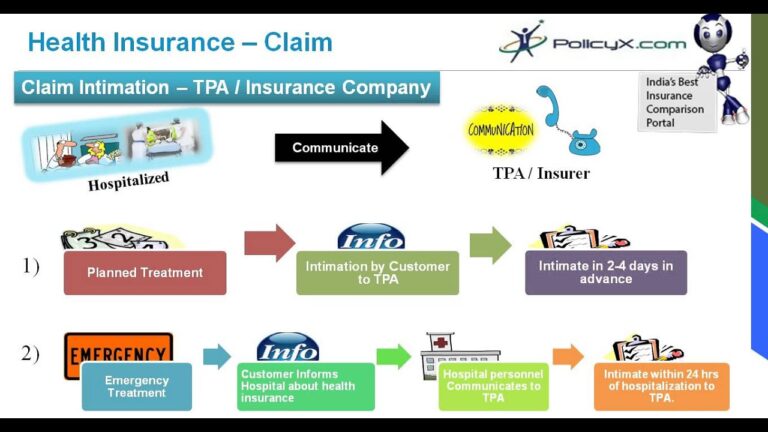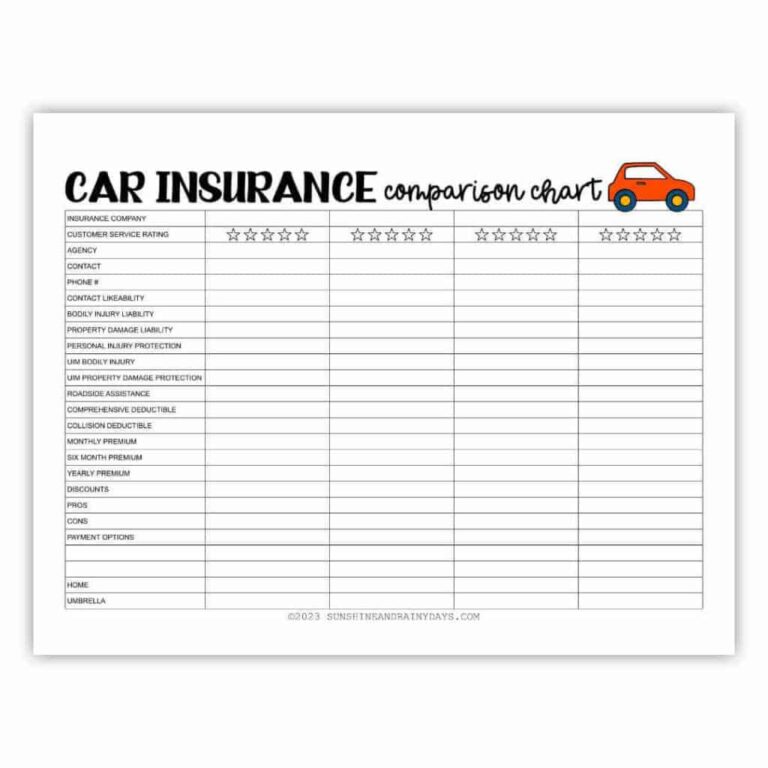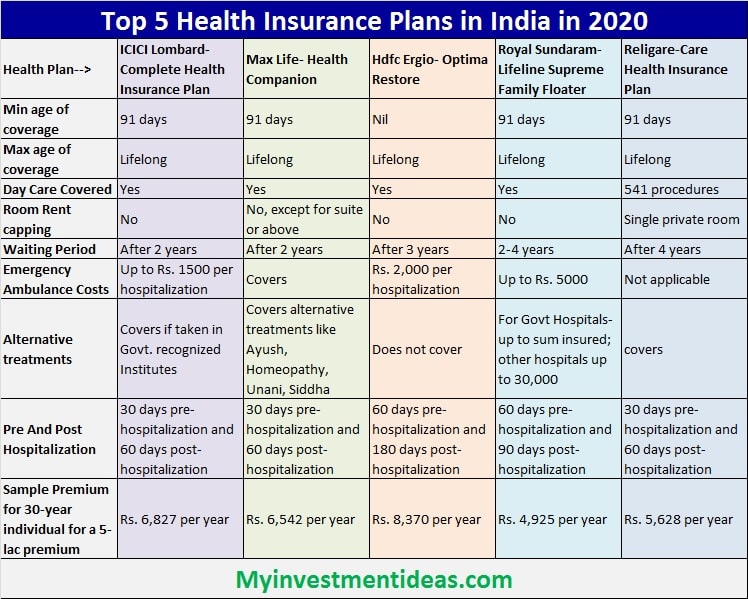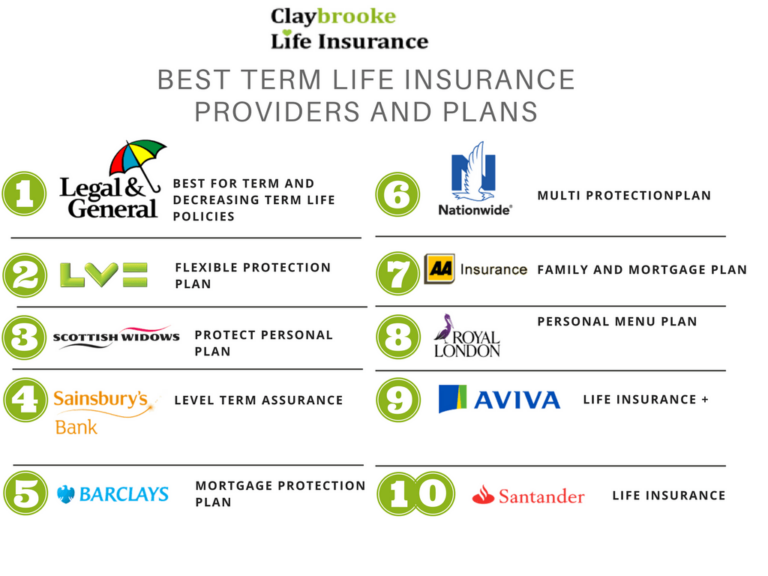Disability insurance: It’s not the most glamorous topic, but securing your financial future in the face of unexpected illness or injury is seriously important. Think about it: a sudden disability can wipe out your income, leaving you struggling with medical bills and everyday expenses. This guide cuts through the jargon, providing a straightforward look at the various types of disability insurance, how to apply, what benefits to expect, and how to choose a plan that fits your needs and budget.
We’ll cover everything from the differences between short-term and long-term policies to navigating the claims process and understanding policy terms. We’ll also explore how disability insurance works alongside other financial planning strategies, ensuring you’re well-prepared for whatever life throws your way. By the end, you’ll have a clearer understanding of how to protect yourself and your family’s financial well-being.
Types of Disability Insurance

Choosing the right disability insurance can feel overwhelming, but understanding the different types available is the first step to securing your financial future in case of illness or injury. This section will break down the key differences between short-term and long-term policies, individual and group plans, and highlight some valuable riders you might consider.
Short-Term vs. Long-Term Disability Insurance
Short-term and long-term disability insurance differ significantly in their coverage duration and the overall impact on your finances. Short-term disability typically covers you for a shorter period, usually ranging from three to six months, paying a percentage of your income during that time. This type of coverage is designed to bridge the gap until you recover and return to work.
Long-term disability insurance, on the other hand, provides coverage for a much longer duration, often up to age 65 or even for life, depending on the policy. It’s designed to protect your income stream if you experience a disabling condition that prevents you from working for an extended period. The longer coverage period makes it crucial to carefully consider the premium costs and policy features.
Individual vs. Group Disability Insurance Plans
The primary difference between individual and group disability insurance lies in how they are purchased and the specifics of their coverage. Group plans are typically offered by employers as an employee benefit, often at a lower cost than individual policies. However, coverage under a group plan ends when you leave your job. Individual disability insurance, purchased directly from an insurance company, provides ongoing coverage regardless of employment status.
This offers greater flexibility and control over your coverage, but generally comes with higher premiums. Coverage amounts and benefit periods can also vary significantly between individual and group plans. For example, a group plan might offer a percentage of your salary up to a certain limit, while an individual plan could allow for a more tailored coverage amount.
Disability Insurance Riders and Their Benefits
Disability insurance riders are add-ons that enhance the basic coverage of your policy. These riders provide additional benefits or protection tailored to your specific needs. For example, a cost-of-living adjustment (COLA) rider automatically increases your benefit payments to keep pace with inflation. This is particularly important for long-term disability policies, as the cost of living can rise significantly over many years.
Another common rider is the return of premium rider, which refunds a portion or all of your premiums if you don’t file a claim during the policy term. This essentially acts as a form of savings plan. Other riders might include those that cover specific conditions, such as cancer or heart disease, or those that offer benefits for rehabilitation or partial disability.
Comparison of Disability Insurance Types
Choosing the right disability insurance requires careful consideration of your individual circumstances and financial needs. The table below compares key features of different types of disability insurance. Remember, these are general examples and specific details will vary depending on the insurer and policy.
| Type | Coverage Period | Benefit Amount | Eligibility Criteria |
|---|---|---|---|
| Short-Term Disability (Group) | 3-6 months | 50-70% of salary (up to a limit) | Employment with qualifying employer |
| Short-Term Disability (Individual) | 3-6 months | Variable, up to 100% of salary | Good health and insurability |
| Long-Term Disability (Group) | To age 65 or retirement | 50-70% of salary (up to a limit) | Employment with qualifying employer |
| Long-Term Disability (Individual) | To age 65 or retirement | Variable, potentially higher percentages of salary | Good health and insurability, often requires a medical exam |
Eligibility and Application Process
Getting disability insurance can feel like navigating a maze, but understanding the eligibility requirements and application process can significantly smooth the way. This section will clarify the health requirements, application procedures, and potential roadblocks you might encounter.
Disability insurance companies assess applicants based on a combination of factors, prioritizing your health status and its impact on your ability to work. The application process itself involves several steps, from providing documentation to waiting for a decision. Understanding these aspects is crucial for a successful application.
Health Requirements for Disability Insurance Applicants
Insurers need to evaluate the severity and expected duration of your disability. They typically require comprehensive medical documentation, including doctor’s reports, test results, and treatment records. The specific health requirements vary depending on the policy and the nature of the disability, but generally, they look for evidence of a condition that significantly impairs your ability to perform your usual job duties.
Pre-existing conditions are often scrutinized, and the insurer may review your medical history to assess the likelihood of the disability being related to a pre-existing condition. Conditions that severely limit your ability to perform daily activities, such as severe arthritis, heart disease, or cancer, often meet the criteria. However, less severe conditions might also qualify if they impact your work abilities.
The Disability Insurance Application Process
The application process typically involves several steps. First, you’ll need to complete an application form, providing personal and employment details. This will be followed by gathering the necessary medical documentation from your doctor(s). This might include detailed medical histories, treatment plans, test results, and any supporting documentation regarding your disability. You’ll also likely need to provide details about your occupation and income.
Once the application and supporting documents are submitted, the insurer will review your information and may request further information or medical evaluations. There’s often a waiting period before benefits begin, typically ranging from 30 to 90 days, or even longer depending on the policy. During this waiting period, the insurer assesses the validity of your claim.
Situations Affecting Eligibility for Disability Insurance
Several factors can affect your eligibility. For example, pre-existing conditions may influence the insurer’s decision, particularly if the claimed disability is related to a pre-existing condition. The nature of your occupation plays a role; some jobs are more susceptible to specific types of disabilities. For instance, a manual laborer is more likely to experience back injuries than an office worker.
Furthermore, engaging in risky behaviors or failing to disclose relevant medical information during the application process can negatively impact your eligibility. Finally, the length of time you’ve had the disability can be a factor. A sudden and severe disability may be easier to prove than a gradually worsening condition.
Disability Insurance Application Flowchart
The following describes a typical flowchart. The specific steps and their order might vary depending on the insurer.
Start → Complete Application Form → Gather Medical Documentation → Submit Application and Documents → Insurer Review → Possible Request for Additional Information → Claim Approved or Denied → Benefits Begin (if approved) → End
Benefits and Claim Process

Understanding how disability insurance benefits work and how to navigate the claims process is crucial for securing financial protection during a time of need. This section details benefit calculations, the claims filing procedure, necessary documentation, and common reasons for claim denials.
Disability insurance benefits are typically calculated as a percentage of your pre-disability income, up to a predetermined maximum benefit amount. The specific percentage and maximum benefit will vary depending on your policy’s terms and conditions. Many policies offer a range of benefit percentages, and the amount you receive may also be affected by factors such as your occupation, the severity of your disability, and the length of your benefit period.
For example, a policy might offer 60% of your pre-disability income, with a maximum monthly benefit of $5,000. If your pre-disability income was $8,000 per month, your monthly benefit would be $4,800 (60% of $8,000), but if your pre-disability income was $10,000 per month, your benefit would still be capped at $5,000. Payments are usually made monthly, directly deposited into your bank account.
Disability Insurance Benefit Calculation
The calculation of disability benefits is usually a straightforward process, though the specifics are detailed in your policy. It often involves determining your average pre-disability earnings over a specified period (e.g., the previous 12 months) and then applying the percentage of coverage stipulated in your policy. This percentage is usually a fixed amount, such as 60% or 70%, but can vary.
Any applicable deductibles or waiting periods will also be factored into the final benefit amount. For example, a policy with a 60% benefit percentage and a $100,000 annual pre-disability income would pay a monthly benefit of $5,000 ($100,000/12 months
– 60%).
Filing a Disability Insurance Claim
The claim process typically involves several steps. First, you’ll need to notify your insurance company as soon as possible after becoming disabled. This notification should be made in writing, preferably via certified mail to establish a clear record. The insurer will then provide you with claim forms and instructions. Complete these forms accurately and thoroughly, providing all the necessary information.
Once submitted, the insurer will review your claim and may request additional information or documentation. You may need to undergo a medical examination by a physician chosen by the insurance company to assess the extent and nature of your disability.
Required Documentation for a Disability Insurance Claim
Supporting your claim with comprehensive documentation is vital. This typically includes:
- Completed claim forms provided by your insurance company.
- Medical records from your treating physician(s), including diagnoses, treatment plans, and prognosis.
- Records of any hospitalizations or surgeries related to your disability.
- Results of any diagnostic tests, such as X-rays, MRIs, or blood tests.
- Letters from your employer confirming your job duties and inability to perform them due to your disability.
- Documentation of any prior illnesses or injuries that may be relevant to your current condition.
Common Reasons for Disability Insurance Claim Denials and Addressing Them
Insurance companies may deny claims for various reasons. Understanding these reasons and how to proactively address them is crucial.
- Pre-existing Conditions: If your disability is related to a condition that existed before your policy’s effective date, the claim might be denied. Addressing this requires carefully reviewing your policy’s pre-existing condition clause and providing evidence that the current disability is a new and distinct condition, not a worsening of a pre-existing one.
- Insufficient Medical Evidence: Claims are often denied due to a lack of sufficient medical evidence supporting the severity and duration of the disability. Gathering comprehensive medical records, obtaining additional specialist opinions, and ensuring clear documentation of your limitations is essential.
- Failure to Meet the Definition of Disability: Policies define disability in specific terms, often requiring an inability to perform the essential duties of your occupation or any occupation for which you are reasonably suited. Demonstrating that you meet this definition requires detailed documentation from your physician and potentially vocational rehabilitation specialists.
- Non-compliance with Policy Terms: Failing to meet the policy’s reporting requirements or other stipulations can lead to denial. Meticulously following all instructions and deadlines from the insurance company is paramount.
Cost and Affordability
Disability insurance premiums can seem daunting, but understanding the factors involved can help you make informed decisions. Several elements influence the final cost, making it crucial to carefully weigh your needs against your budget. This section will explore these factors, compare individual and group plans, and suggest strategies for securing affordable coverage.
Factors Influencing Disability Insurance Premium Costs
Many factors contribute to the cost of your disability insurance premiums. Your age is a significant one; younger individuals generally pay less than older applicants due to a lower statistical risk of disability. Your health status plays a critical role; pre-existing conditions or health concerns can lead to higher premiums or even denial of coverage. The type of occupation you hold also matters; high-risk jobs with a greater chance of injury or illness will result in higher premiums.
The amount of coverage you choose directly impacts the cost; higher coverage levels mean higher premiums. Finally, the length of the benefit period influences the price; longer benefit periods naturally cost more. For example, a 25-year-old healthy office worker will pay significantly less than a 50-year-old construction worker seeking the same level of coverage.
Individual vs. Group Disability Insurance Costs
Individual disability insurance plans are typically more expensive than group plans offered through employers. This is because group plans benefit from economies of scale and risk pooling, lowering the overall cost per individual. Individual plans, however, offer more flexibility in terms of coverage and benefit periods, but come with a higher price tag. The level of coverage, waiting periods, and benefit amounts also vary greatly between individual and group plans, further impacting cost.
A person with a pre-existing condition might find it difficult or expensive to obtain an individual plan, while group plans may offer more inclusive coverage, although possibly with limitations.
Strategies for Finding Affordable Disability Insurance
Several strategies can help you find affordable disability insurance. Shopping around and comparing quotes from multiple insurers is essential. Consider shorter benefit periods or elimination periods (the time you must wait before benefits begin) to lower premiums. Opting for a lower benefit percentage (e.g., 60% of your income instead of 70%) can also reduce costs. Improving your health and lifestyle can potentially lead to lower premiums in the future, though this won’t impact current costs.
Finally, exploring options like professional organizations or associations that offer group rates can potentially lead to savings. Remember, carefully evaluating your needs and budget is crucial to selecting an affordable and suitable plan.
Estimated Disability Insurance Costs
The following table provides estimated monthly and annual premiums for different age groups and coverage levels. These are illustrative examples and actual costs will vary based on the factors mentioned previously. It’s crucial to obtain personalized quotes from insurance providers for accurate pricing.
| Age Group | Coverage Level (Monthly Income Replacement) | Monthly Premium | Annual Premium |
|---|---|---|---|
| 25-34 | 60% | $50 | $600 |
| 25-34 | 70% | $75 | $900 |
| 35-44 | 60% | $75 | $900 |
| 35-44 | 70% | $110 | $1320 |
| 45-54 | 60% | $125 | $1500 |
| 45-54 | 70% | $180 | $2160 |
Disability Insurance and Other Coverages

Disability insurance is a crucial component of a comprehensive financial plan, but it’s not the only type of protection you need. Understanding how it interacts with other forms of insurance, like health and long-term care insurance, is key to maximizing your financial security. This section will explore the relationships between disability insurance and other coverages, highlighting how they work together to provide a robust safety net.Disability insurance, health insurance, and long-term care insurance each address different aspects of risk.
Health insurance covers medical expenses related to illness or injury, while long-term care insurance addresses the costs of long-term care services should you become chronically ill or disabled. Disability insurance, on the other hand, focuses on replacing lost income due to a disabling condition that prevents you from working. The key difference is that health and long-term care insurance deal with medical costs, while disability insurance addresses the financial impact of lost earning potential.
Disability Insurance and Health Insurance: A Synergistic Relationship
Health insurance and disability insurance are often complementary. Health insurance covers medical expenses resulting from an illness or injury that leads to disability, while disability insurance replaces your income during the period you are unable to work due to that same condition. For example, someone injured in a car accident might use health insurance to cover medical bills, rehabilitation, and physical therapy, while disability insurance would replace their lost wages during their recovery and time away from work.
The two together provide a comprehensive safety net, addressing both medical costs and lost income.
Disability Insurance and Long-Term Care Insurance: Addressing Different Needs
Long-term care insurance and disability insurance address different stages of potential long-term health issues. Disability insurance typically covers a shorter period, focusing on the inability to work due to injury or illness. Long-term care insurance, however, covers expenses associated with long-term care services needed due to chronic illness or disability that may last for years. Someone with a debilitating stroke might use disability insurance for a period of time while recovering and unable to work, then transition to long-term care insurance to cover the ongoing costs of care if they remain unable to perform daily activities.
Disability Insurance as a Complement to Other Financial Planning Strategies
Integrating disability insurance into a broader financial plan is essential. It complements savings, retirement plans, and investments by providing a safety net against the unexpected loss of income. Imagine a scenario where a high-earning professional suddenly becomes disabled and can no longer work. Without disability insurance, their savings, retirement accounts, and investments might be quickly depleted to cover living expenses and medical bills.
Disability insurance acts as a crucial buffer, helping to maintain financial stability during a challenging time. It allows for a more secure retirement and protects the assets carefully accumulated over time.
Examples of Scenarios Where Disability Insurance is Particularly Beneficial
Consider a self-employed entrepreneur. Their income is directly tied to their ability to work. A disabling illness or injury could quickly cripple their business and financial well-being. Disability insurance acts as a crucial safety net, providing income replacement to maintain the business and their personal financial stability. Similarly, a parent of young children relies on their income to support their family.
Disability would significantly impact their ability to provide for their children’s needs. Disability insurance can alleviate some of that financial stress. Finally, a high-income earner who has invested heavily in retirement savings might find their savings depleted quickly if they lose their income due to disability. Disability insurance acts as a critical protection, maintaining their lifestyle and ensuring their retirement plan is not jeopardized.
Integrating Disability Insurance into a Comprehensive Financial Plan
A well-structured financial plan should incorporate disability insurance alongside other vital elements. The process begins with assessing your income, expenses, and risk tolerance. Determining the appropriate level of coverage involves considering your current income, anticipated future income, and the duration of potential disability. Professional financial advisors can help you assess your needs and select a policy that aligns with your individual circumstances and financial goals.
Regularly reviewing your policy to ensure it remains adequate as your income and family circumstances change is crucial. This proactive approach ensures that you have the necessary protection in place to navigate unexpected events.
Understanding Policy Terms and Conditions
Navigating the world of disability insurance policies requires a clear understanding of the terminology and conditions Artikeld in your contract. These terms significantly impact your eligibility for benefits and the amount you receive. Failing to grasp these details could mean the difference between receiving adequate financial support during a disability and facing significant financial hardship.
Waiting Periods, Elimination Periods, and Benefit Periods
These three periods define the timeframe before benefits begin and how long they last. The waiting period is the initial period after the onset of disability before benefits start. The elimination period, often used interchangeably with waiting period, is the time you must be disabled before benefits are paid. This period is usually expressed in days or weeks.
The benefit period, on the other hand, specifies the maximum length of time you can receive benefits under the policy, often ranging from two years to the remainder of your working life. A shorter benefit period might mean your policy offers lower premiums but less long-term security. A longer benefit period will typically come with higher premiums. For example, a policy with a 90-day elimination period and a five-year benefit period means you won’t receive benefits for the first 90 days of your disability, and payments will cease after five years, regardless of your ongoing disability.
Definitions of Disability: Own Occupation vs. Any Occupation
The definition of disability significantly influences your eligibility for benefits. “Own occupation” policies define disability as the inability to perform the main duties of your
- specific* occupation. This is generally more favorable to the insured, as it accounts for specialized skills and expertise. Conversely, “any occupation” policies define disability as the inability to perform
- any* occupation for which you are reasonably suited by education, training, or experience. This definition is stricter and may lead to benefit denial even if you can’t perform your current job but could perform other work.
For instance, a surgeon with a debilitating hand injury might still qualify for benefits under an “own occupation” policy because they can no longer perform surgery. However, under an “any occupation” policy, they might be denied benefits if they are still capable of performing administrative or consulting work.
Illustrative Scenarios and Impact on Benefit Payouts
Consider these examples:Scenario 1: Sarah has a disability insurance policy with a 30-day elimination period and a five-year benefit period. She becomes disabled due to a back injury and is unable to work for 18 months. She will receive benefits for 18 months minus the initial 30 days.Scenario 2: John has a policy with a 90-day elimination period and a two-year benefit period.
He experiences a severe illness that leaves him unable to work for three years. He will only receive benefits for two years, even though his disability continues beyond that time.Scenario 3: Maria has an “own occupation” policy and suffers a debilitating stroke that prevents her from practicing law. She receives benefits. However, if she had an “any occupation” policy and could perform administrative work, benefits might be denied or reduced.
Glossary of Key Terms
| Term | Definition |
|---|---|
| Elimination Period | The period of time you must be disabled before benefits begin. |
| Benefit Period | The maximum length of time benefits are paid. |
| Waiting Period | Similar to elimination period, the time before benefits start. |
| Own Occupation | Disability defined by inability to perform the duties of your specific job. |
| Any Occupation | Disability defined by inability to perform any job for which you are reasonably suited. |
| Residual Disability | Inability to perform some, but not all, of your job duties. |
| Partial Disability | Inability to perform some, but not all, of your job duties, often resulting in reduced benefits. |
| Total Disability | Complete inability to perform any duties of your job. |
Choosing the Right Disability Insurance Plan
Picking the right disability insurance plan can feel overwhelming, but understanding key factors simplifies the process. It’s about finding a plan that balances your needs, budget, and long-term financial security. The right plan protects your income and lifestyle should you become unable to work.
Key Factors to Consider When Choosing a Disability Insurance Plan
Several critical factors influence the suitability of a disability insurance plan. Careful consideration of these elements ensures you secure the appropriate level of protection.
- Definition of Disability: The definition of disability significantly impacts your claim approval. “Own occupation” policies are generally more comprehensive, paying benefits if you can’t perform your specific job, while “any occupation” policies require you to be unable to work in
-any* occupation. “Own occupation” offers stronger protection but typically costs more. - Benefit Amount: This is the monthly payment you’ll receive if disabled. Aim for a benefit that replaces a significant portion of your current income, ideally 60-70%, to cover living expenses. Consider future income growth and inflation when determining this amount.
- Benefit Period: This is the length of time benefits are paid. Options range from two years to lifetime benefits. Longer benefit periods provide greater security but usually increase premiums.
- Elimination Period (Waiting Period): This is the time you must wait after becoming disabled before benefits begin. Longer elimination periods result in lower premiums, but you’ll need sufficient savings to cover expenses during this waiting period. A common range is 30 to 90 days.
- Premium Costs: Premiums vary depending on factors like age, health, occupation, and policy features. Compare quotes from multiple insurers to find the best value for your needs.
- Rider Options: Many insurers offer optional riders to enhance coverage, such as cost-of-living adjustments (COLA) to protect against inflation, or return of premium riders that refund a portion of your premiums if you don’t file a claim.
Disability Insurance Plan Evaluation Checklist
A structured approach ensures you don’t overlook crucial aspects when comparing plans.
- Policy Summary: Review the policy summary carefully, paying close attention to the definition of disability, benefit amount, benefit period, and elimination period.
- Premium Comparison: Obtain quotes from at least three different insurers. Compare not only the premiums but also the features and benefits offered.
- Financial Advisor Consultation: Discuss your options with a qualified financial advisor to determine the best plan for your individual financial situation and risk tolerance.
- Health Assessment: Be honest and thorough during the health assessment. Inaccurate information can lead to claim denials.
- Independent Review: If possible, have an independent insurance professional review the policy before purchasing it.
Negotiating with Disability Insurance Providers
While not always possible, skillful negotiation can sometimes lead to better terms.
Negotiating lower premiums might be achievable if you have a strong health history or can accept a longer elimination period. Clearly articulating your needs and comparing offers from multiple providers strengthens your negotiating position. Remember, insurers are businesses and want to secure your business, so a well-reasoned approach can be effective.
Decision-Making Framework for Choosing a Disability Insurance Plan
A structured approach is essential for selecting the right plan.
First, assess your income needs and risk tolerance. Then, compare policies based on the key factors Artikeld above, using the checklist as a guide. Finally, consider your long-term financial goals and select the plan that best aligns with your overall financial strategy. For example, a young professional with a high income and a lower risk tolerance might opt for a comprehensive “own occupation” policy with a shorter elimination period, even if the premiums are higher.
Conversely, someone closer to retirement with a lower income might choose a less expensive “any occupation” policy with a longer elimination period.
Concluding Remarks
Protecting your income against disability isn’t just about insurance; it’s about safeguarding your future. By understanding the different types of disability insurance, the application process, and the importance of carefully reviewing policy terms, you can make informed decisions that provide crucial financial security. Remember, the peace of mind that comes with adequate disability coverage is invaluable. Take the time to explore your options and secure the protection you deserve.
FAQ Insights
Can I get disability insurance if I have a pre-existing condition?
Possibly. Insurers assess applications individually, considering the severity and stability of pre-existing conditions. Full disclosure is crucial during the application process.
What happens if my claim is denied?
If your claim is denied, carefully review the reasons provided. You likely have the right to appeal the decision, often requiring additional documentation or a review by a medical professional.
How long does the application process take?
The application process varies, but generally takes several weeks to a few months, depending on the insurer and the complexity of your application.
Can I increase my coverage later?
Often, yes, but you may need to undergo a new health review and potentially pay higher premiums. Check your policy for details.
What’s the difference between own occupation and any occupation definitions of disability?
“Own occupation” provides benefits if you can’t perform your specific job, while “any occupation” requires you to be unable to perform
-any* job for which you’re reasonably suited by training and experience. “Own occupation” is generally more comprehensive but more expensive.






